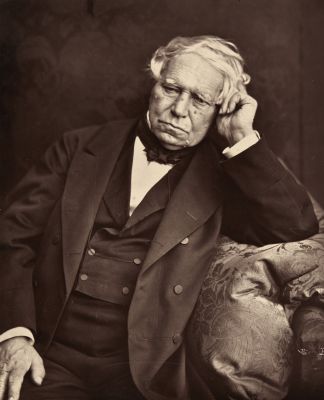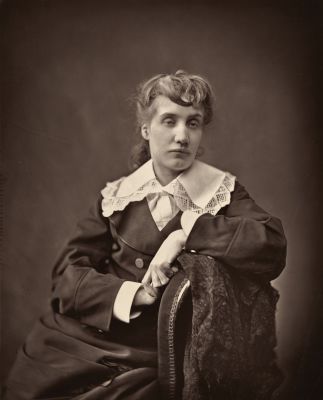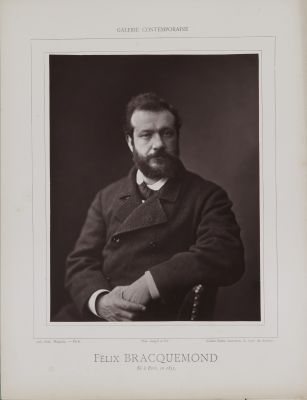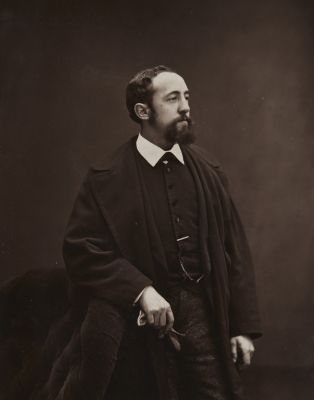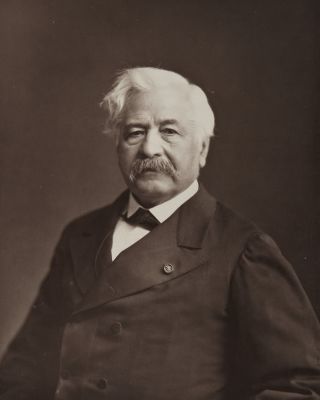
Title
Octave FeuilletArtist
Adam-Salomon, Antoine Samuel (French, 1818-1881)Publication
Galerie ContemporaineDate
1877Process
Woodburytype, gelatin matrixAtelier
Goupil & CieImage Size
23.5 x 18 cm
This is an original matrix used for the production of photoglyptic prints (Woodburytype) for Galerie Contemporaine published from 1876 to 1889 by Goupil in Paris. This is a positive on bichromate gelatin which shows a relief proportional to the values of the image: strong in the blacks and zero in the whites. This gel was molded on a lead plate using a hydraulic press exerting high pressure. The blacks would then appear hollow on the plate which ultimately serves as a printing matrix. Woodbury’s process underwent several improvements subsequent to the original patent. In its final form, a hardened colorless ‘gelatin relief’ (i.e. a carbon print minus the carbon) was impressed upon a block of lead under enormous hydraulic pressure-an idea doubtless taken from Auer’s nature printing’. The intaglio mold thus produced was placed in a hand-press, and warm pigmented spread over this, the press closed, and the excess gelatin hardening in an alum bath. The resulting picture was similar in appearance to a Swan carbon print.
Woodbury claimed that 600 to 800 impressions could be obtained from each metal mold, and about twenty molds made from one gelatin relief- that is, at least 12,000 impressions could be obtained from one relief. In practice, however, it was found that only five or six metal molds could be made from one gelatin relief. The prints could be made at the rate of 120 an hour. In 1867 Goupil & Co. of Paris acquired for 150,000 francs the Woodburytype patent rights for France, where the process was introduced as Photoglyptie. In 1870 the American rights were acquired by John Carbutt of Philadelphia. [1]
Octave Feuillet (11 August 1821 – 29 December 1890) was a French novelist and dramatist.
Antoine Samuel Adam-Salomon (1818–1881) was a French sculptor and photographer. After becoming established as a sculptor, Adam-Salomon studied photography under the portraitist Franz Hanfstaengl in Munich in 1858. He became a leading portrait photographer. Adam-Salomon returned to Paris where he opened a portrait studio in 1859; in 1865 he opened a second Paris studio. In 1870 Adam-Salomon was made a member of the Société française de photographie and received the Légion d’honneur the same year. Adam-Salomon’s portrait photographs were considered to be among the best existing works during his lifetime, and were renowned for their chiaroscuro produced by special lighting techniques. The photography of Adam-Salomon played a pivotal role in the mainstream acceptance of photography as an art form. [2]
References
[1] Gernsheim, Helmut. The History of Photography: The Age of Collodion. London: Thames and Hudson, 1989. p 264
[2] Hannavy, John, editor. Encyclopedia of Nineteenth-century Photography, p. 971 and 567.

